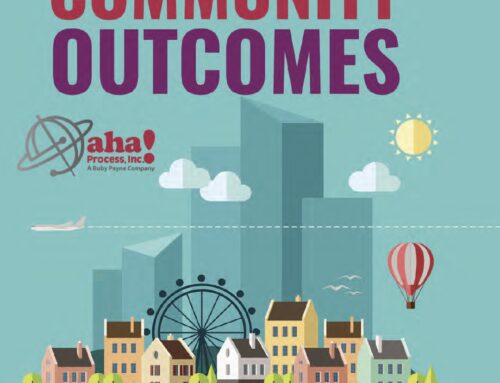By Debora McDermed, Ph.D
A Nevada local health clinic is currently a partner to the Bridges initiative, and the following story is a work in progress with changing the culture and outcomes in delivering health care.
As with many health care providers, the challenge of no-shows and late appointments was plaguing our local group. The clinic manager came to a Bridges Out of Poverty Day One training and learned the hidden rule of time one day after he had formed a policy that stated if someone were one minute late for their appointment, they would be placed in a “walk-in” status. This would mean potentially hours of waiting and, considering the tyranny of poverty, would result in the client leaving the clinic and perhaps not returning.
To monitor its progress, the clinic utilized a customer satisfaction survey, which had typically been mediocre to unsatisfactory the past two years. After learning about the hidden rule of time and the importance of relationships to the client, the clinic made the following changes to their delivery of service:
- They decided to dedicate one practitioner for two days a week to just walk-ins. This means that when someone is late or walks-in, there is a doctor who is devoted to this issue alone.
- They investigated why clients were late or no-shows and added bus passes, reminder calls, and other forms of transportation assistance to remedy some of the issues clients were dealing with. As an aside, they always had bus passes; however, clients were either unaware or reluctant to ask for assistance due to low levels of relationship.
- They decided to introduce themselves by name when guiding someone through the clinic appointment process. Prior to that, they had simply greeted the client without sharing their first name. In investigating why this occurred, the clinic personnel shared that they didn’t want to be identified if there were complaints from clients.
This change was hard to get in place. Employees were resistant, but it ultimately became a clinic policy. The changes coincided with a customer satisfaction survey about 90 days into these new policies, resulting in:
- 30% increase in customer satisfaction.
- Anecdotal comments from clients on how much friendlier the clinic is and noticing the change in the way clients were treated.
- On time appointments increased by 20%.
- No-shows continued, but also decreased. No percentage is known at this time because they previously were not tracking this area.
At the same time, the clinic offered its first pilot of Getting Ahead in a Just Gettin’ by World to seventeen folks who frequent the clinic connected to the Homeless Shelter.
This group recently graduated and told stories of their changes and insights. Their graduation was attended by the physician who heads the clinics, the marketing executive for the clinic, and the grants manager. This was the first “GA” group, and the graduation was both moving and insightful. The clinic manager attended the beginning of each class to invite participants to share how the clinic could do a better job of serving them. The excitement over the results on both sides is not unusual for GA; however, it has led to both institutional change and relationship change for all.
We will kick off the next GA in their clinic in a few weeks.
Small successes – big wins!








